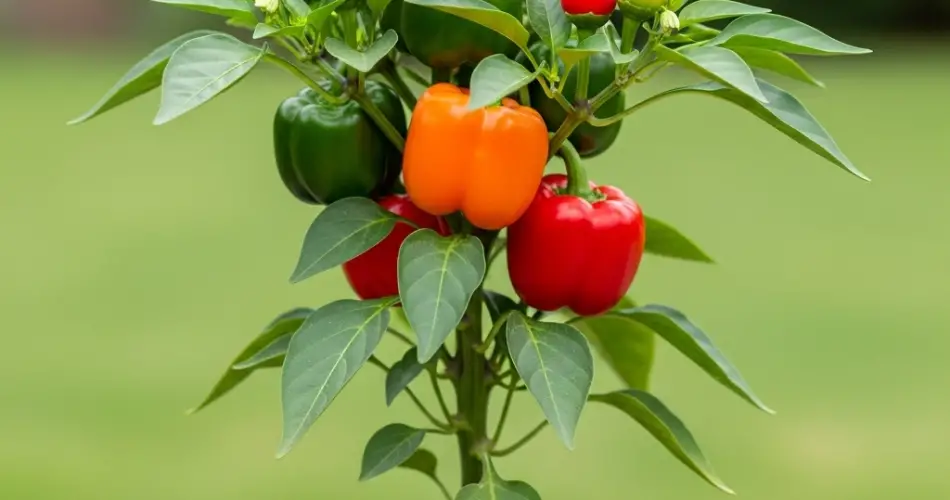Growing peppers in garden pots is a fantastic way to enjoy fresh, homegrown vegetables even if you don’t have access to a full-sized garden. Whether you prefer sweet bell peppers or fiery chili varieties, container gardening offers flexibility, control, and convenience. With the right conditions and care, you can harvest a generous crop of colorful, flavorful peppers from the comfort of your patio, balcony, or windowsill.
Why Choose Pots for Growing Peppers?
There are several benefits to growing peppers in containers:
-
Space-saving: Perfect for urban spaces or small gardens.
-
Mobility: Easily move pots to maximize sunlight or protect plants from harsh weather.
-
Better control: Manage soil quality, moisture levels, and pests more effectively.
-
Cleaner setup: Containers reduce weeding and make harvesting easier.
Container growing also makes it possible to experiment with different varieties in small areas, whether you’re after bell peppers, cayennes, jalapeños, or habaneros.
Choosing the Right Container
Peppers need deep, well-draining pots to develop healthy roots. The ideal container size is at least 12–14 inches deep and wide, though larger is better for more vigorous varieties. Containers should have multiple drainage holes to avoid water buildup.
Here are a few container options:
-
Plastic pots (lightweight and retain moisture)
-
Clay or terracotta pots (breathable, but dry out faster)
-
Fabric grow bags (promote air pruning of roots)
-
Recycled buckets or tubs with holes drilled in the bottom
Best Pepper Varieties for Pots
While almost any pepper can be grown in a container, compact or dwarf varieties tend to perform best. Here are a few container-friendly options:
-
Bell Peppers: ‘Mini Belle’, ‘California Wonder’
-
Chili Peppers: ‘Cayenne’, ‘Thai Hot’, ‘Jalapeño’
-
Ornamental Peppers: ‘Numex Twilight’, ‘Black Pearl’
-
Sweet Peppers: ‘Banana’, ‘Lunchbox Mix’
Early and medium-sized varieties generally yield better results in limited space.
Preparing the Pot and Soil
Use a high-quality potting mix that is light, well-draining, and rich in organic matter. Avoid using garden soil alone, as it can become compacted and restrict root growth.
You can create a nutrient-rich blend with:
-
60% potting mix
-
30% compost or well-rotted manure
-
10% perlite or coco coir for aeration
Add a balanced, slow-release fertilizer at planting time or mix in bone meal or worm castings for a natural nutrient boost.
Planting Pepper Seedlings
If starting from seed, sow indoors 6–8 weeks before the last expected frost. Transplant the seedlings outdoors once nighttime temperatures consistently stay above 15°C (59°F). Peppers thrive in warmth and need full sun—at least 6–8 hours daily.
To plant:
-
Fill the container with your potting mix, leaving about 1–2 inches from the rim.
-
Dig a hole slightly larger than the root ball.
-
Gently place the seedling into the hole, firm the soil around it, and water thoroughly.
Space one plant per pot unless you’re using an extra-large container.
Care and Maintenance
Watering
Keep the soil evenly moist but never waterlogged. Water when the top inch of soil feels dry. In hot weather, daily watering may be needed. Container plants dry out faster than in-ground ones.
Fertilizing
Feed your peppers every 2–3 weeks with a liquid fertilizer high in potassium and phosphorus, especially during flowering and fruiting stages.
Staking
Some pepper varieties grow tall and produce heavy fruit. Use small stakes or cages to support the plant and prevent breakage.
Pruning
Pinch off early flowers to encourage stronger root development. Removing lower leaves can also improve air circulation and reduce disease risk.
Pest Control
Peppers are vulnerable to aphids, spider mites, and whiteflies. Inspect regularly and treat infestations with neem oil, insecticidal soap, or by rinsing with water.
Harvesting Your Peppers
Peppers can be harvested at various stages, depending on your taste. Green bell peppers can be picked early, or you can wait for them to ripen to red, yellow, or orange for a sweeter flavor. Hot peppers also intensify in heat the longer they mature.
Use scissors or pruners to harvest to avoid damaging the plant. Regular harvesting encourages more fruit production.
Troubleshooting Common Problems
-
Yellowing leaves: Often a sign of overwatering or poor drainage.
-
Blossom end rot: Caused by calcium deficiency or inconsistent watering.
-
Stunted growth: Can result from cold temperatures or nutrient-poor soil.
Maintain steady moisture levels, provide full sun, and ensure your soil is nutrient-rich for best results.
Final Thoughts
Container-grown peppers are a rewarding and productive addition to any small-space garden. With the right care, a few pots can yield a bountiful harvest throughout the season. Choose the right varieties, maintain warmth and moisture, and you’ll enjoy fresh peppers straight from your patio or balcony in no time. Whether you’re into mild sweet peppers or fiery chilis, this compact gardening method delivers flavor, convenience, and satisfaction.



